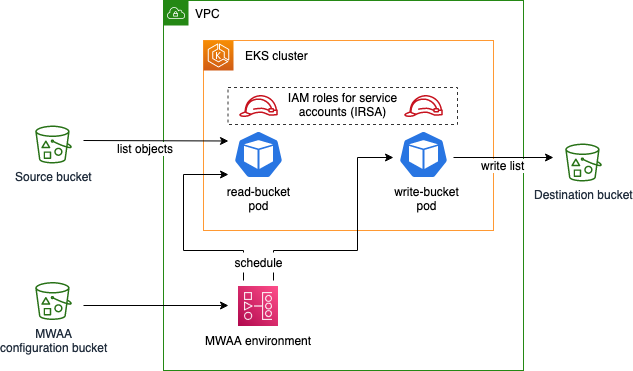AWS Big Data Blog
Category: *Post Types
Non-JSON ingestion using Amazon Kinesis Data Streams, Amazon MSK, and Amazon Redshift Streaming Ingestion
Organizations are grappling with the ever-expanding spectrum of data formats in today’s data-driven landscape. From Avro’s binary serialization to the efficient and compact structure of Protobuf, the landscape of data formats has expanded far beyond the traditional realms of CSV and JSON. As organizations strive to derive insights from these diverse data streams, the challenge […]
Process and analyze highly nested and large XML files using AWS Glue and Amazon Athena
In today’s digital age, data is at the heart of every organization’s success. One of the most commonly used formats for exchanging data is XML. Analyzing XML files is crucial for several reasons. Firstly, XML files are used in many industries, including finance, healthcare, and government. Analyzing XML files can help organizations gain insights into […]
Build event-driven architectures with Amazon MSK and Amazon EventBridge
Based on immutable facts (events), event-driven architectures (EDAs) allow businesses to gain deeper insights into their customers’ behavior, unlocking more accurate and faster decision-making processes that lead to better customer experiences. In EDAs, modern event brokers, such as Amazon EventBridge and Apache Kafka, play a key role to publish and subscribe to events. EventBridge is […]
Introducing hybrid access mode for AWS Glue Data Catalog to secure access using AWS Lake Formation and IAM and Amazon S3 policies
To ease the transition of data lake permissions from an IAM and S3 model to Lake Formation, we’re introducing a hybrid access mode for AWS Glue Data Catalog. This feature lets you secure and access the cataloged data using both Lake Formation permissions and IAM and S3 permissions. Hybrid access mode allows data administrators to onboard Lake Formation permissions selectively and incrementally, focusing on one data lake use case at a time. For example, say you have an existing extract, transform and load (ETL) data pipeline that uses the IAM and S3 policies to manage data access. Now you want to allow your data analysts to explore or query the same data using Amazon Athena. You can grant access to the data analysts using Lake Formation permissions, to include fine-grained controls as needed, without changing access for your ETL data pipelines.
Using Experian identity resolution with AWS Clean Rooms to achieve higher audience activation match rates
This is a guest post co-written with Tyler Middleton, Experian Senior Partner Marketing Manager, and Jay Rakhe, Experian Group Product Manager. As the data privacy landscape continues to evolve, companies are increasingly seeking ways to collect and manage data while protecting privacy and intellectual property. First party data is more important than ever for companies […]
Manage your workloads better using Amazon Redshift Workload Management
Amazon Redshift workload management (WLM) helps you maximize query throughput and get consistent performance for the most demanding analytics workloads by optimally using the resources of your existing data warehouse. This post provides examples of analytics workloads for an enterprise, and shares common challenges and ways to mitigate those challenges using WLM. We guide you through common WLM patterns and how they can be associated with your data warehouse configurations. We also show how to assign user roles to WLM queues and how to use WLM query insights to optimize configuration.
Set up fine-grained permissions for your data pipeline using MWAA and EKS
This blog post shows how to improve security in a data pipeline architecture based on Amazon Managed Workflows for Apache Airflow (Amazon MWAA) and Amazon Elastic Kubernetes Service (Amazon EKS) by setting up fine-grained permissions, using HashiCorp Terraform for infrastructure as code.
Stitch Fix seamless migration: Transitioning from self-managed Kafka to Amazon MSK
Stitch Fix is a personalized clothing styling service for men, women, and kids. In this post, we will describe how and why we decided to migrate from self-managed Kafka to Amazon Managed Streaming for Apache Kafka (Amazon MSK).
Accelerate Amazon Redshift secure data use with Satori – Part 1
This post is co-written by Lisa Levy, Content Specialist at Satori. Data democratization enables users to discover and gain access to data faster, improving informed data-driven decisions and using data to generate business impact. It also increases collaboration across teams and organizations, breaking down data silos and enabling cross-functional teams to work together more effectively. […]
Externalize Amazon MSK Connect configurations with Terraform
Managing configurations for Amazon MSK Connect, a feature of Amazon Managed Streaming for Apache Kafka (Amazon MSK), can become challenging, especially as the number of topics and configurations grows. In this post, we address this complexity by using Terraform to optimize the configuration of the Kafka topic to Amazon S3 Sink connector. By adopting this […]









